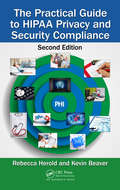 The Practical Guide to HIPAA Privacy and Security Compliance
5893675
The Practical Guide to HIPAA Privacy and Security Compliance
5893675
|
Kevin Beaver
Rebecca Herold
|
9781040060636 |
2015 |
Contains images
|
|
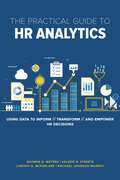 The Practical Guide to HR Analytics: Using Data to Inform, Transform, and Empower HR Decisions
6628605
The Practical Guide to HR Analytics: Using Data to Inform, Transform, and Empower HR Decisions
6628605
|
Lindsay McFarlane
Valerie Streets
Shonna D. Waters PhD
Rachael Johnson-Murra
|
9781586445348 |
2018 |
Contains images
|
|
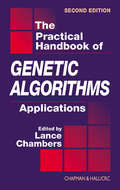 The Practical Handbook of Genetic Algorithms: Applications, Second Edition
6409797
The Practical Handbook of Genetic Algorithms: Applications, Second Edition
6409797
|
Lance Chambers
|
9781040202456 |
2001 |
Contains images
|
|
 The Practical Handbook of Internet Computing (Chapman & Hall/CRC Computer and Information Science Series)
6405522
The Practical Handbook of Internet Computing (Chapman & Hall/CRC Computer and Information Science Series)
6405522
|
Munindar P. Singh
|
9781135439682 |
2004 |
Contains images
|
|
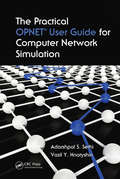 The Practical OPNET User Guide for Computer Network Simulation
6287107
The Practical OPNET User Guide for Computer Network Simulation
6287107
|
Adarshpal S. Sethi
Vasil Y. Hnatyshin
|
9781040063071 |
2013 |
Contains images
|
|
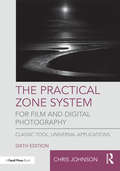 The Practical Zone System for Film and Digital Photography: Classic Tool, Universal Applications
5510510
The Practical Zone System for Film and Digital Photography: Classic Tool, Universal Applications
5510510
|
Chris Johnson
|
9781315465319 |
2017 |
Contains images
|
|
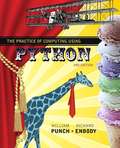 The Practice Of Computing Using Python
3927063
The Practice Of Computing Using Python
3927063
|
Richard Enbody
William Punch
|
9780134379760 |
2017 |
|
|
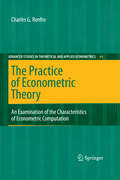 The Practice of Econometric Theory
1418487
The Practice of Econometric Theory
1418487
|
Charles G. Renfro
|
9783540755715 |
2009 |
Contains images
|
|
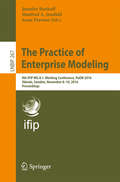 The Practice of Enterprise Modeling
1532040
The Practice of Enterprise Modeling
1532040
|
Anne Persson
Manfred A. Jeusfeld
Jennifer Horkoff
|
9783319483931 |
2008 |
Contains images
|
|
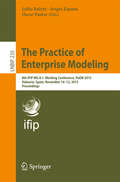 The Practice of Enterprise Modeling
1404313
The Practice of Enterprise Modeling
1404313
|
Jolita Ralyté
Sergio España
Óscar Pastor
|
9783319258973 |
2015 |
Contains images
|
|
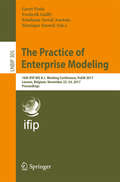 The Practice of Enterprise Modeling: 10th IFIP WG 8.1. Working Conference, PoEM 2017, Leuven, Belgium, November 22-24, 2017, Proceedings (Lecture Notes in Business Information Processing #305)
5920720
The Practice of Enterprise Modeling: 10th IFIP WG 8.1. Working Conference, PoEM 2017, Leuven, Belgium, November 22-24, 2017, Proceedings (Lecture Notes in Business Information Processing #305)
5920720
|
Geert Poels, Frederik Gailly, Estefania Serral Asensio and Monique Snoeck
|
9783319702414 |
2017 |
Contains images
|
|
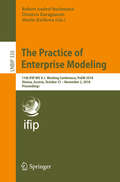 The Practice of Enterprise Modeling: 11th IFIP WG 8.1. Working Conference, PoEM 2018, Vienna, Austria, October 31 – November 2, 2018, Proceedings (Lecture Notes in Business Information Processing #335)
5919428
The Practice of Enterprise Modeling: 11th IFIP WG 8.1. Working Conference, PoEM 2018, Vienna, Austria, October 31 – November 2, 2018, Proceedings (Lecture Notes in Business Information Processing #335)
5919428
|
Robert Andrei Buchmann
Dimitris Karagiannis
Marite Kirikova
|
9783030023027 |
2018 |
Contains images
|
|
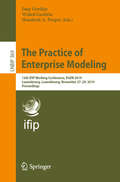 The Practice of Enterprise Modeling: 12th IFIP Working Conference, PoEM 2019, Luxembourg, Luxembourg, November 27–29, 2019, Proceedings (Lecture Notes in Business Information Processing #369)
3406813
The Practice of Enterprise Modeling: 12th IFIP Working Conference, PoEM 2019, Luxembourg, Luxembourg, November 27–29, 2019, Proceedings (Lecture Notes in Business Information Processing #369)
3406813
|
Wided Guédria
Henderik A. Proper
Jaap Gordijn
|
9783030351519 |
2019 |
Contains images
|
|
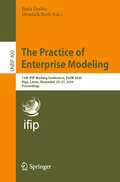 The Practice of Enterprise Modeling: 13th IFIP Working Conference, PoEM 2020, Riga, Latvia, November 25–27, 2020, Proceedings (Lecture Notes in Business Information Processing #400)
3682611
The Practice of Enterprise Modeling: 13th IFIP Working Conference, PoEM 2020, Riga, Latvia, November 25–27, 2020, Proceedings (Lecture Notes in Business Information Processing #400)
3682611
|
Jānis Grabis
Dominik Bork
|
9783030634797 |
2020 |
Contains images
|
|
 The Practice of Enterprise Modeling: 14th IFIP WG 8.1 Working Conference, PoEM 2021, Riga, Latvia, November 24–26, 2021, Proceedings (Lecture Notes in Business Information Processing #432)
4326177
The Practice of Enterprise Modeling: 14th IFIP WG 8.1 Working Conference, PoEM 2021, Riga, Latvia, November 24–26, 2021, Proceedings (Lecture Notes in Business Information Processing #432)
4326177
|
Jolita Ralyté
Janis Stirna
Jānis Grabis
Estefanía Serral
|
9783030912796 |
2021 |
Contains images
|
|
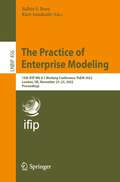 The Practice of Enterprise Modeling: 15th IFIP WG 8.1 Working Conference, PoEM 2022, London, UK, November 23–25, 2022, Proceedings (Lecture Notes in Business Information Processing #456)
5159637
The Practice of Enterprise Modeling: 15th IFIP WG 8.1 Working Conference, PoEM 2022, London, UK, November 23–25, 2022, Proceedings (Lecture Notes in Business Information Processing #456)
5159637
|
Kurt Sandkuhl
Balbir S. Barn
|
9783031214882 |
2022 |
Contains images
|
|
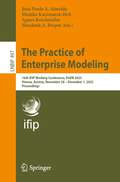 The Practice of Enterprise Modeling: 16th IFIP Working Conference, PoEM 2023, Vienna, Austria, November 28 – December 1, 2023, Proceedings (Lecture Notes in Business Information Processing #497)
5739674
The Practice of Enterprise Modeling: 16th IFIP Working Conference, PoEM 2023, Vienna, Austria, November 28 – December 1, 2023, Proceedings (Lecture Notes in Business Information Processing #497)
5739674
|
Henderik A. Proper
Agnes Koschmider
João Paulo A. Almeida
Monika Kaczmarek-Heß
|
9783031485831 |
2024 |
Contains images
|
|
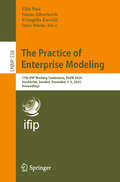 The Practice of Enterprise Modeling: 17th IFIP Working Conference, PoEM 2024, Stockholm, Sweden, December 3–5, 2024, Proceedings (Lecture Notes in Business Information Processing #538)
6388989
The Practice of Enterprise Modeling: 17th IFIP Working Conference, PoEM 2024, Stockholm, Sweden, December 3–5, 2024, Proceedings (Lecture Notes in Business Information Processing #538)
6388989
|
Janis Stirna
Jelena Zdravkovic
Elda Paja
Evangelia Kavakli
|
9783031779084 |
2025 |
Contains images
|
|
 The Practice of Enterprise Modeling: 9th IFIP WG 8.1. Working Conference, PoEM 2016, Skövde, Sweden, November 8-10, 2016, Proceedings (Lecture Notes in Business Information Processing #267)
5924685
The Practice of Enterprise Modeling: 9th IFIP WG 8.1. Working Conference, PoEM 2016, Skövde, Sweden, November 8-10, 2016, Proceedings (Lecture Notes in Business Information Processing #267)
5924685
|
Jennifer Horkoff, Manfred A. Jeusfeld and Anne Persson
|
9783319483931 |
2016 |
Contains images
|
|
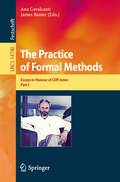 The Practice of Formal Methods: Essays in Honour of Cliff Jones, Part I (Lecture Notes in Computer Science #14780)
6170772
The Practice of Formal Methods: Essays in Honour of Cliff Jones, Part I (Lecture Notes in Computer Science #14780)
6170772
|
Ana Cavalcanti
James Baxter
|
9783031666766 |
2024 |
Contains images
|
|
 The Practice of Formal Methods: Essays in Honour of Cliff Jones, Part II (Lecture Notes in Computer Science #14781)
6170773
The Practice of Formal Methods: Essays in Honour of Cliff Jones, Part II (Lecture Notes in Computer Science #14781)
6170773
|
Ana Cavalcanti
James Baxter
|
9783031666735 |
2024 |
Contains images
|
|
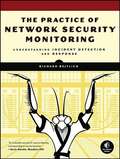 The Practice of Network Security Monitoring: Understanding Incident Detection and Response
822837
The Practice of Network Security Monitoring: Understanding Incident Detection and Response
822837
|
Richard Bejtlich
|
9781593275099 |
2013 |
|
|
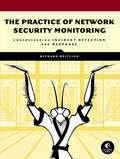 The Practice of Network Security Monitoring: Understanding Incident Detection and Response
5007670
The Practice of Network Security Monitoring: Understanding Incident Detection and Response
5007670
|
Richard Bejtlich
|
9781593275341 |
2013 |
Contains images
|
|
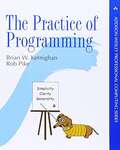 The Practice of Programming
6185777
The Practice of Programming
6185777
|
Brian W. Kernighan
Rob Pike
|
9780201615869 |
1999 |
Contains images
|
|
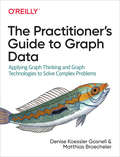 The Practitioner's Guide to Graph Data: Applying Graph Thinking and Graph Technologies to Solve Complex Problems
6423400
The Practitioner's Guide to Graph Data: Applying Graph Thinking and Graph Technologies to Solve Complex Problems
6423400
|
Denise Gosnell
Matthias Broecheler
|
9781492044024 |
2020 |
Contains images
|
|